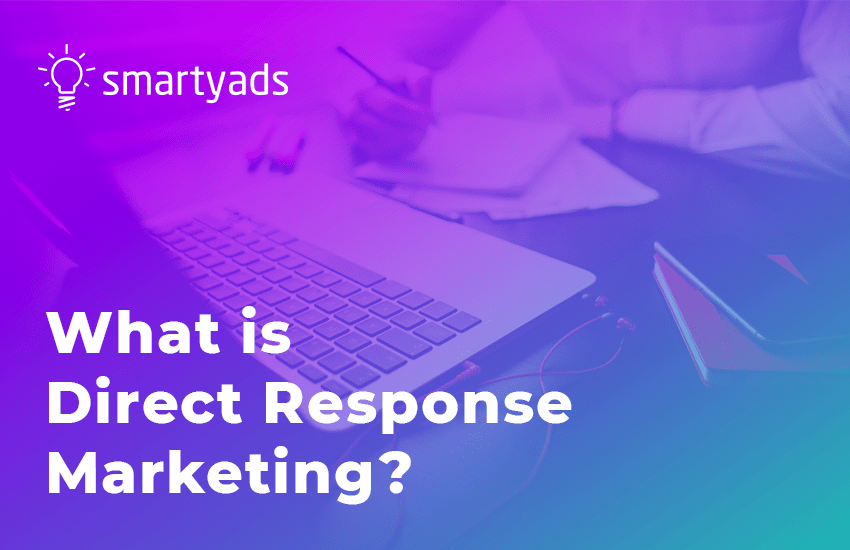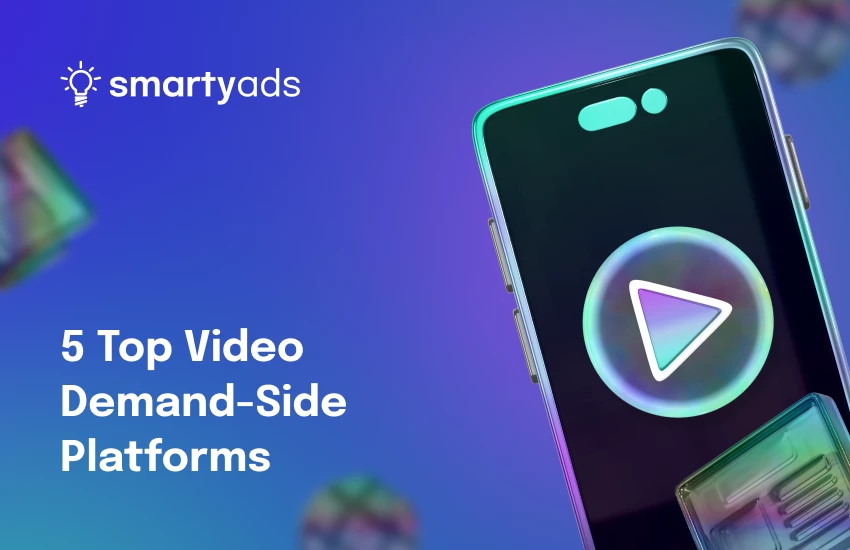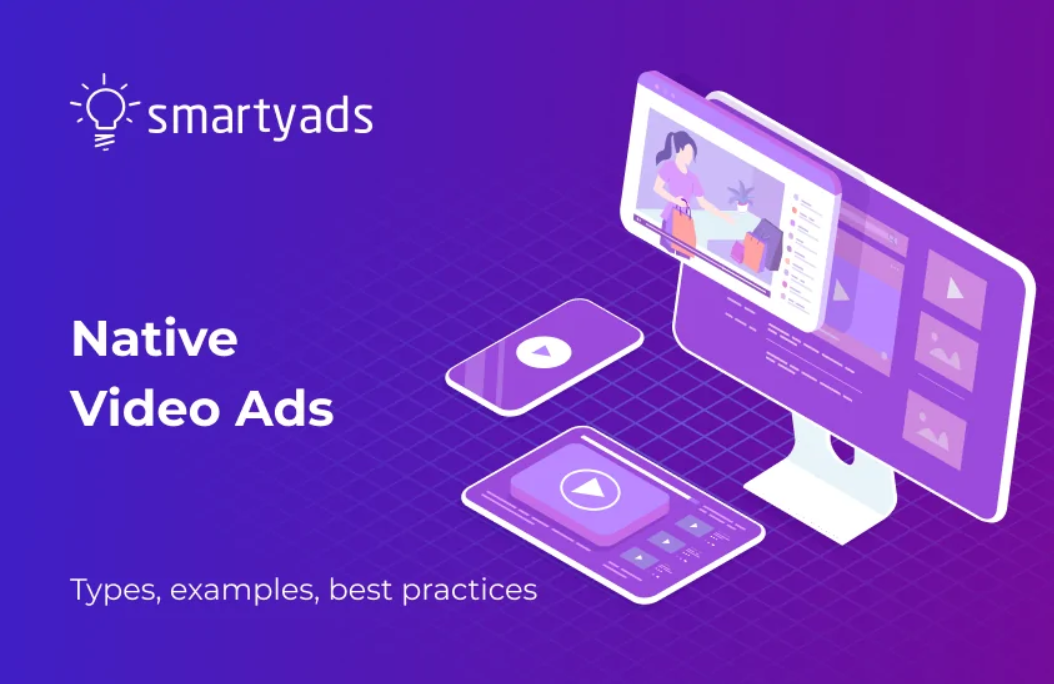Direct response marketing is a sales strategy that aims to evoke immediate responses from potential customers by encouraging them to take action on the advertiser's offer. This type of customer engagement remains effective and popular to this day, although we're sure you might think that the hundreds of unread messages from different brands in your inbox might make you think otherwise. Nevertheless, the Direct Mail Advertising market is predicted to grow to US$61.59bn by 2029.
The effectiveness of direct response marketing lies in its use of compelling offers and clear calls to action to motivate users to act immediately.
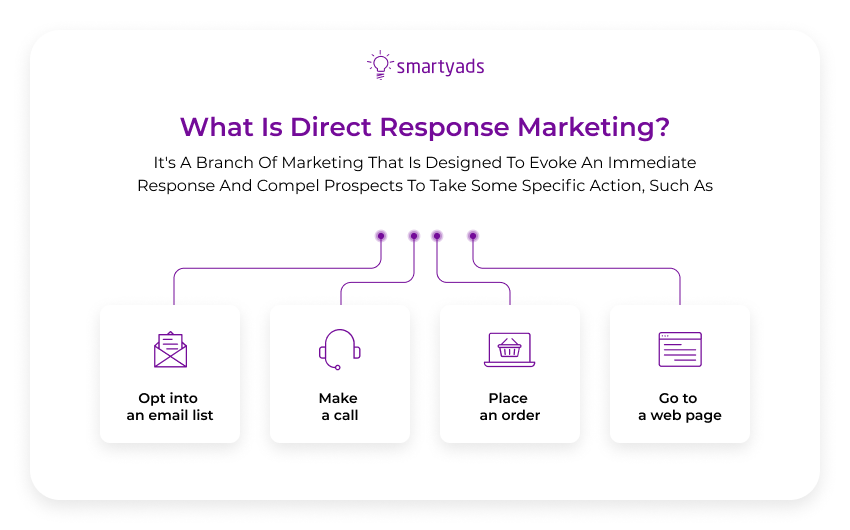
Direct response marketing generates leads by creating tempting offers and pushing prospects through popular ad channels like direct response tv marketing, print, radio, websites, and online ads. It converts passers-by into paying customers by asking them to sign up, share contacts, and register on a website. Direct response campaigns immediately generate ROI, unlike other ad strategies that take months or years to achieve brand awareness and image.

Why is Direct Response Marketing important?
Direct response marketing techniques are very useful tools for marketers. It can play a significant role in developing a brand's digital marketing and strategy.
Let's look at the reasons why you should definitely pay attention to direct response marketing:
You can get Measurable Results
Direct response marketing allows marketers to track and measure the results of their ad campaigns. This means they can see exactly how many people responded to their offers, which offers were the most effective, and which tactics need to be adjusted for better results.
It's Cost-effective
Direct response marketing can be cost-effective because it is highly targeted and focused on driving specific actions.
This means that small businesses can avoid wasting money on advertising to people unlikely to be interested in their product or service.
It increases Customer Engagement
Direct response marketing is designed to engage customers and encourage them to respond immediately.
By providing compelling offers and calls-to-action in direct response ads, businesses can build a relationship with customers and increase their likelihood of making a purchase.
It gives you Flexibility
Direct response marketing allows businesses to be flexible in their approach. They can adjust their offers and tactics based on their results and test different approaches to see what works best.
It Encourages users to Immediate Response
Direct response marketing is focused on generating an immediate, direct response to advertisements. This means that businesses can see results quickly and make adjustments to their campaigns in real time.
What are the key components of direct response marketing campaigns?
Ads that are designed to support a direct response marketing strategy have one clear goal in mind - to sell products immediately. This means that the ad and the decision to purchase something are closely linked. Direct response marketing definition says that ad should elicit an immediate response; otherwise, it will be deemed unsuccessful. In order to achieve this, a typical direct response ad includes certain elements that are crucial to its success.
An offer
An "offer" is a combination of factors such as the product itself, the cost per unit, trial period, terms, optional features, guarantee, incentives, future obligations, time or quantity limit, shipping, handling, etc.
Very often, the aim of the offer is not to sell anything but rather to get the prospect's interest and lead them to the next action, such as requesting a free demo version of the product. Usually, the offer is fixed on a prospect and appeals to their emotions, desires, frustrations, and fears.
Information
Direct response meaning ads must have enough information for customer consideration and immediate acceptance of the offer. As a rule, the less famous the product is, the more information is needed.
On average, the advertiser has 4 seconds to grab the recipient's attention. Thus, the message must be personalized, relevant, and persuasive.
Call-to-action and means of response

Each direct response ad contains a clear CTA, forcing the visitor to do something specific and moving them further down the sales funnel. A few common examples of direct response marketing:
- Use this coupon at the counter;
- Follow the link below;
- Contact us immediately by calling this number;
- Subscribe to our monthly newsletter;
- Share an image/article/ad with your friends;
- Download a free trial/beta version of the product;
- Sign up for a mailing list;
- Buy now and receive a discount, etc.
Typically, advertisers include multiple options for response, such as toll-free numbers, emails, websites, etc. Direct response marketers often use expiration dates and deadlines to create a sense of urgency and hurry their audience to act as quickly as possible, almost impulsively.
Direct Response Marketing channels
Different channels are needed to increase the reach of your target audience. You can simultaneously use one or more channels for a successful direct-response marketing campaign. Here are some of the most common ones:
Direct mail
Direct mail is a form of direct response marketing that involves sending physical mail, such as postcards, letters, or catalogs, to a targeted list of potential customers. Direct mail can be an effective way to reach a specific audience and generate a response.
Direct mail can also be used with other channels, such as email, social media ads, or referral programs to create a more integrated and effective ad campaign.
Email marketing
This channel allows you to send promotional messages or offers directly to a targeted list of email subscribers.
Email marketing campaigns typically involve creating a targeted email list based on demographics, geographic location, or past purchase behavior.
One of the advantages of direct response marketing is that it allows businesses to reach their audience in a relatively low-cost way. It can also be highly personalized, allowing businesses to tailor their message and offers to their subscribers' specific interests and needs.
Social media advertising
Social media ad is a form of direct response marketing — the well-known creation of targeted ads on platforms such as Facebook, Twitter, or LinkedIn.
However, it's important to note that social media ads can be a competitive space, and it's important to create compelling content and offers that stand out from the competition.
Monitoring and optimizing ad performance, such as adjusting targeting or ad creative, is also important to maximize effectiveness and return on investment.
Pay-per-click advertising
This channel allows you to create targeted ads that appear at the top of search engine results or other websites.
The advertiser selects specific keywords or topics related to their product or service and then sets a bid for how much they are willing to pay each time someone clicks on their ad. The higher the bid, the more likely the ad will be displayed to users.
Telemarketing
Telemarketing is telephone calls to a targeted list of potential customers to promote a product or service.
Telemarketing can be an effective way to generate immediate responses from potential customers, especially when combined with other direct response marketing tactics such as email or direct mail.
However, it can also be controversial and subject to regulation, especially when it involves unsolicited calls or the use of automated dialing systems. It is important for companies that use direct response marketing to follow best practices and comply with relevant regulations to avoid potential legal issues and maintain a positive reputation.
Infomercials
Infomercials involve long television commercials that provide detailed information about a product or service and contain a CTA to order.
Infomercials typically run for 30 minutes to an hour and include a combination of product demonstrations, testimonials, and sales pitches. They are often aired during late-night or early-morning hours when viewers are more likely to be receptive to the message.
But infomercials can also be expensive to produce and air, and there is no guarantee of success.
Print advertising
This channel includes ads in newspapers, magazines, or other print publications.
Print advertising can be a cost-effective way to attract leads and sales, especially when combined with other direct response marketing tactics such as email or telemarketing. But it's important to carefully target your audience and choose the right print media to ensure that the right people see the ads.
Event marketing
Event marketing is a form of direct response marketing in which companies host or participate in events, such as trade shows, conferences, or product demonstrations, to promote their direct response products or services and generate leads or sales.
The key to the success of any of these channels is to determine which ones are most effective for your audience and to create compelling offers and calls -to action that prompt a response.

5 Benefits of direct response marketing
Generating immediate ROI
Direct response is all about instant reaction and immediate revenues from instant sales.
With programmatic advertising, media buyers can determine the price for one impression at a time and bid only on those impressions that bring value.
Trackable performance
When a user responds (clicks, signs up, etc.), the advertiser knows exactly which ad and which media generated that impression.
When buying through DSP (demand-side platform), advertisers can determine whether ads are effective, which target group is affected by the ad the most, what is the engagement rate, what amount of clicks is generated daily, and so on; all data is simply displayed on the dashboard.
Measurable outcomes
Since advertisers know precisely which ads are being responded to and how much revenue is coming from each one, they can easily evaluate the campaign performance.
For this reason, direct response is one possible way to test the scale of consumer responses with a small campaign before launching a full-volume campaign. In digital advertising, advertisers measure campaign outcomes via DSP's granular and real-time metrics.
Targeting specific audiences
While a branding campaign targets everybody in order to promote brand awareness, a successful direct response campaign is all about people who are most likely interested in the product.
When buying digital ad space through RTB (Real-time bidding), advertisers deliver relevant ads in front of the right person in the right context and at the right time. So, what is RTB? Find our in our previous article.
Precise segmentation
Marketers can develop effective segmentation strategies by buying a list of potential consumers, such as new car buyers, credit card users, clothing shoppers, etc.
With programmatic advertising, advertisers can use ad networks specializing in the content types they cover, like entertainment, beauty, traveling, food, etc.
These websites would then be grouped into vertical channels and sold out to advertisers who wish to reach out to people interested in these topics.
Alternatively, some ad networks sell audience segments built on demographic, behavioral data, or user interests.
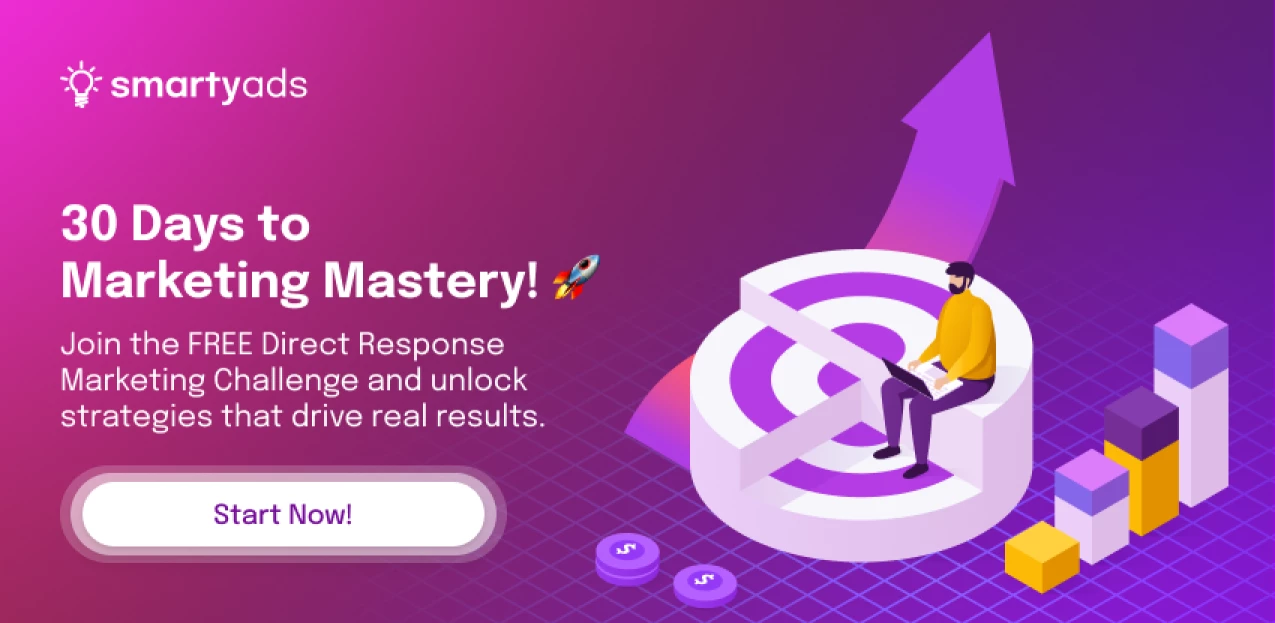
How to create a Direct Response Marketing campaign?
There are many different options for creating a successful direct-response marketing campaign. However, we'll discuss the basic steps necessary to launch such a campaign. Depending on your goals, you may add additional steps to these.
Identify your target audience
This is probably the common step for every digital marketing campaign. You need to know who you are targeting and who should be interested in your product or service.
Identify your ideal customer and profile their demographics, interests, and behaviors. This will help you tailor your marketing message to their specific needs and preferences.
Develop a compelling offer
To get a user interested in buying, you must offer them something worth their attention. Your offer should be what your target audience wants and needs. It must be relevant, valuable, and unique. Your offer could be a discount, a free trial, a bonus product, or a special package.
Make a strong CTA
A strong CTA does not have to be unique; the most important thing is that it clearly reflects the essence of your offer and what you want from the user.
Your CTA should be clear and specific. It should tell your audience exactly what you want them to do, whether to make a purchase, fill out a form, or call a phone number.
Choose the right marketing channel
Don't forget that many different tools are available to achieve your marketing goals, and you can choose which ones to use. Don't limit yourself to one channel, experiment and analyze which channels work best for your target audience.
Decide which channels will be most effective in reaching your target audience. It could be direct mail, email, social media, pay-per-click advertising, or a combination of these channels.
For example, a small business owner can build brand awareness and drive more sales in the store by launching an outdoor ad campaign with DOOH.

Programmatic DOOH is on the rise; thanks to it, brands launch effective direct-response campaigns based on data. These ads are reaching even people who have busy lives and don't use their gadgets frequently.
In order to promote brand image long term, small businesses can also use programmatic audio advertising, which can address people when they are busy.
Digital audio ad spend is projected to reach $8.594 million only in the US, all thanks to the growing popularity caused by increased podcast and digital radio consumption.
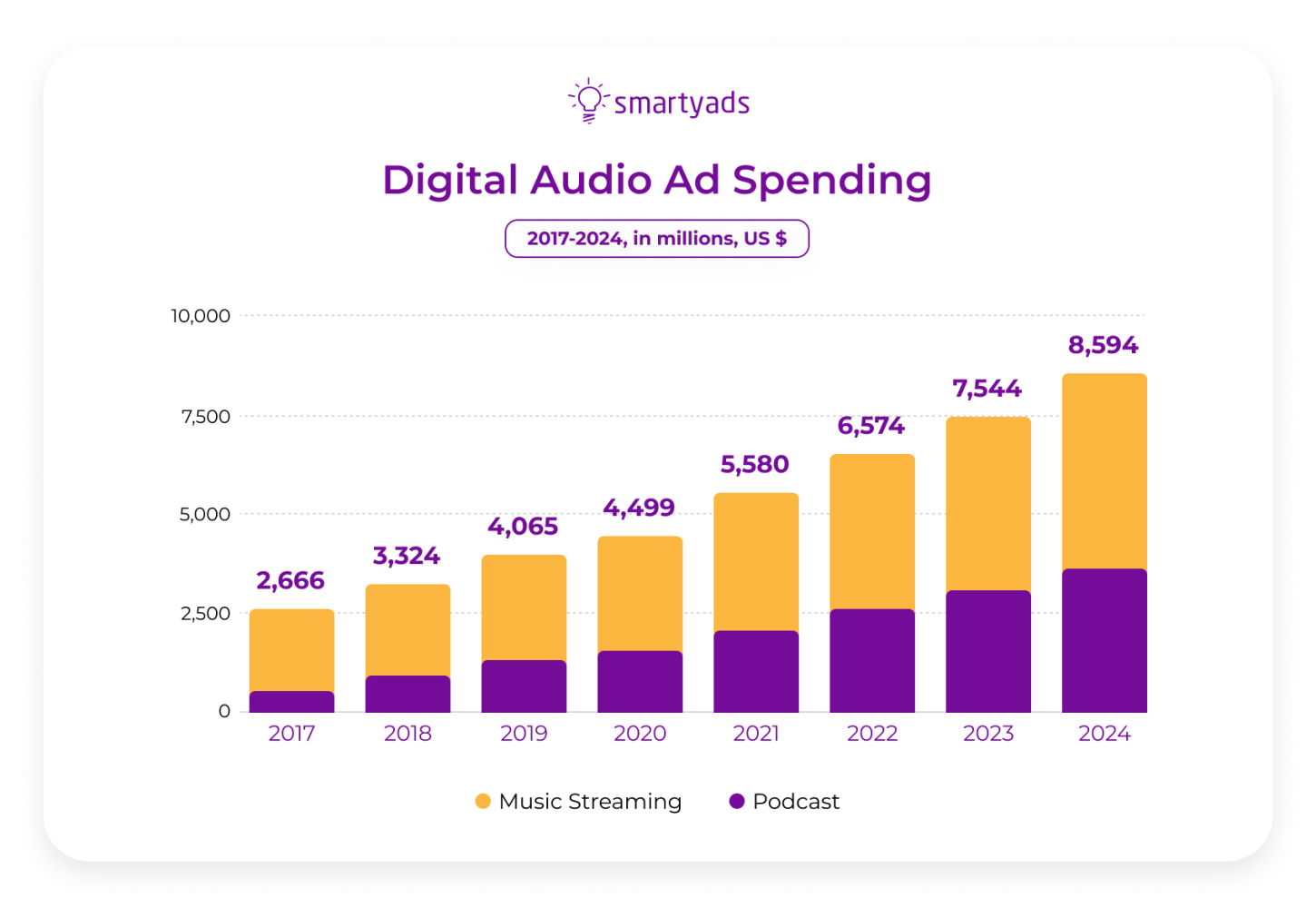
Create compelling creatives and visuals
Your creatives and visuals should be eye-catching and persuasive. This is the face of your campaign; it should grab attention and stick in the user's mind as an association with your brand. They should emphasize the benefits of your offer and create a sense of urgency to drive your audience to action.
Test and optimize your campaign
Collect data at every stage of your direct response campaign, and conduct A/B testing to identify the best marketing strategy. This will allow you to improve your performance and increase your effectiveness. Test different campaign elements like the offer, CTA, and advertising channels to see what works best. Use data and analytics to optimize your campaign and improve results over time.
Remember that direct response marketing is about getting immediate feedback from your target audience. This can be intimidating, but it actually gives you a huge advantage because you can react instantly and adjust your strategic decisions by analyzing the information you receive.
Catchy direct response marketing examples
Farmer's Dog
One of my favorite direct response ad examples: the advertisement is for a dog food that boasts of cleaning pets’ teeth without the need for extra tools like a brush. Pet owners often face the challenge of trying to perform necessary hygiene procedures on their dogs, who may prefer to chew on toothbrushes instead of lying still. This dog food ad perfectly addresses this issue and offers a simple and elegant solution. The landing page is designed to immediately entice customers to buy.

Picsart
Picsart, an image editing service, sent out an email to its users encouraging them to sign up for the paid version of the app. The email is designed with bright visuals and a cheerful slogan to grab the user's attention. The email marketer also subtly praises the user for their creativity skills, which can be a persuasive tactic to entice the user to sign up for the paid version of the app.
By doing so, the user will have access to more advanced tools and features that can help them enhance their photo editing skills. Therefore, the email from Picsart serves as a reminder to users that investing in the paid version of the app can be beneficial for them in the long run. A good example of direct response marketing.
Spotify
Have you ever tried a free trial of a service and then found yourself hooked? It's a common trap that many of us have fallen into. Spotify has done a great job of using this strategy to get more users - it offers a free trial period to new users, and once you start using it, you'll see that it has a huge library of authorized music. In fact, it's become one of the most popular music streaming services out there.
If you're thinking about signing up for Spotify, you'll receive an email newsletter that tells you all about the service.

Banana Republic Factory
Direct response retailing has been successful in adapting to the fact that it is already engaged in selling products to customers who are ready to make a purchase. A pop-up window appears when the customer is browsing the shopping cart for a few seconds. The language used in the window creates a sense of urgency, indicating that the offered goods are limited in quantity and may not be available at the same price again. This compels the customer to make a quick decision and take advantage of the offer while they can.

Conclusions
Starting direct marketing is easy if you take the right steps and have a well-planned strategy, offer, information, and call to action. Use our DSP to set up a campaign and target the right people.
Sign up at SmartyAds DSP and start your direct response marketing campaigns today!

